Ramses the Great: A Pharaoh in Paris
After the United States, and before Australia, France has been, since April 7, the only European country to host a large-scale exhibition around the...
Montaine Dumont 25 May 2023
Amenhotep IV, widely recognized as the notorious Akhenaten, was the enigmatic “heretic” pharaoh who ruled during the Eighteenth Dynasty. Through his profound religious and artistic reforms of the Amarna period, he challenged and disbanded Egyptian traditions that had endured for millennia. While the Amarna period did not endure beyond Akhenaten’s reign, it left a profound impact on the history of ancient Egypt. To comprehend the significance of the Amarna period, it is crucial to grasp the sequence of events that led to this tumultuous era in Pharaonic history.
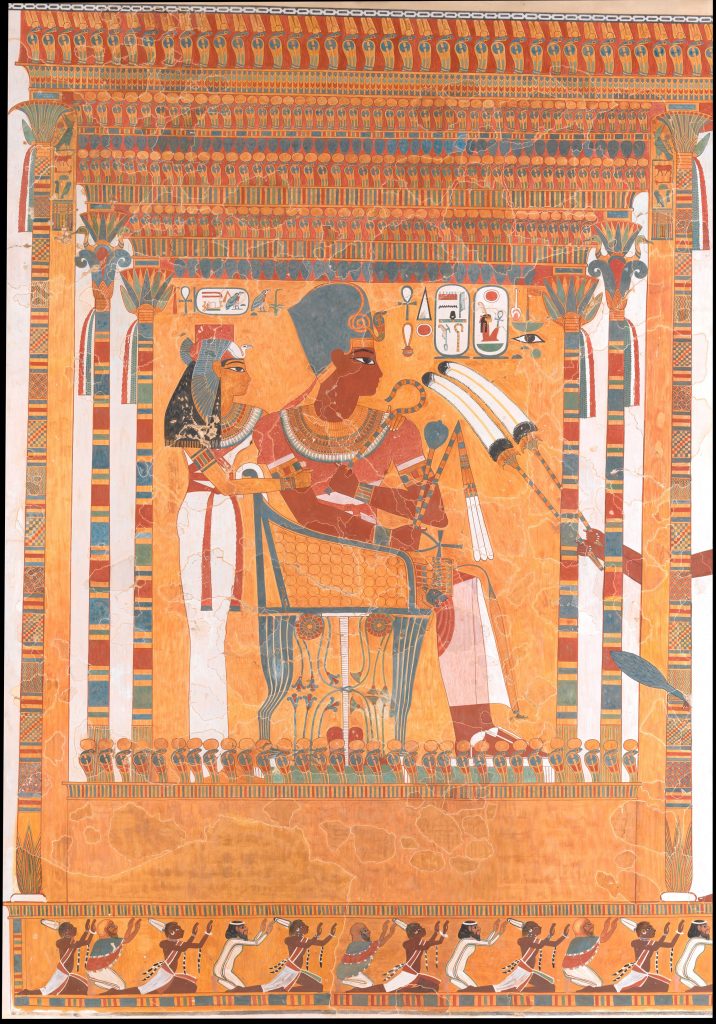
Nina de Garis Davies, Facsimile painting of Amenhotep III and his Mother, Mutemwia, in a Kiosk, ca.1914; original ca. 1390–1352 BCE, The Metropolitan Museum of Art, New York, NY, US.
Amenhotep III had a long and prosperous reign spanning 38 years, and his son, Thutmose was his intended successor. However, following Thutmose’s mysterious demise, his younger brother, Amenhotep IV, assumed the role of co-regent during the 37th year of his father’s reign and succeeded to the throne upon his death. This course of events occurred around 1353 BCE and marked the beginning of one of the most controversial periods in the history of the New Kingdom.
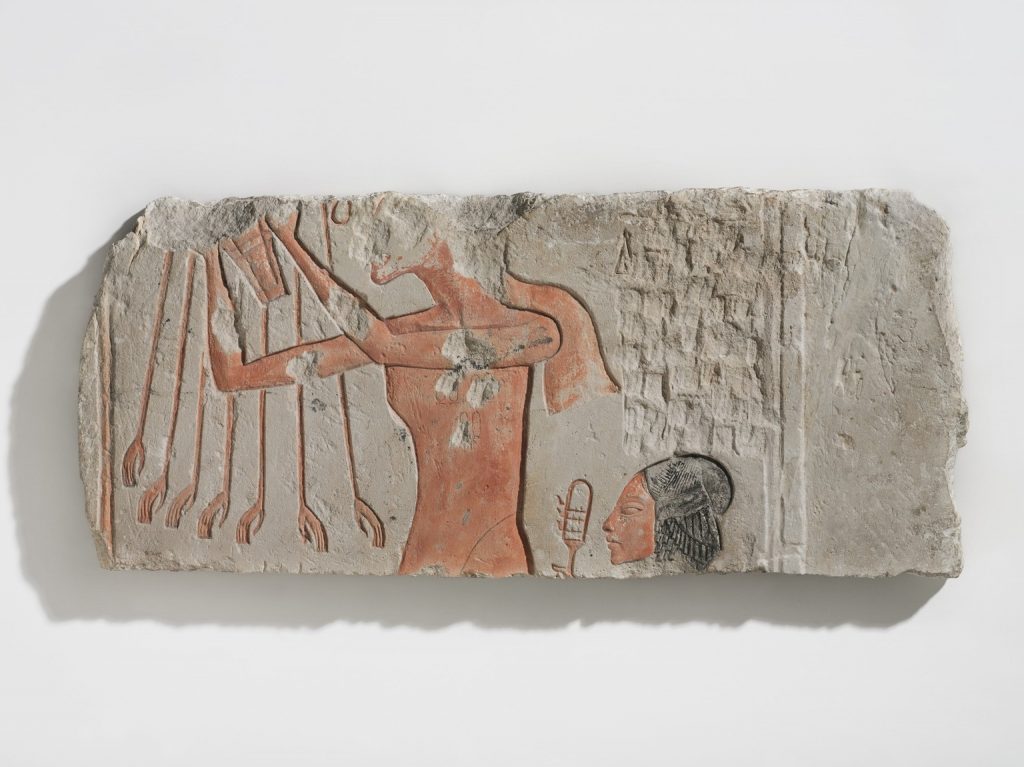
Akhenaten and his Daughter Offering to the Aten, ca. 1353-1336 BCE, Brooklyn Museum, Brooklyn, NY, US.
The mythology of Aten, a radiant disk of the sun, was first evidenced in the Middle Kingdom through solar worship and had much older roots. However, it became particularly important during the New Kingdom. Thutmoses IV hinted at a new emphasis on the worship of the sun disc Aten. His son, Amenhotep III, fostered the worship of Aten and commissioned its representations in architectural endeavors.
Despite the growing popularity of Atenism, the cult of Amun still wielded great influence during the reign of Amenhotep III, rivaling that of the royal family. Historians theorize that it was perhaps these political factors that gave rise to what would become a highly unique and controversial religious revolution of ancient Egyptian history.
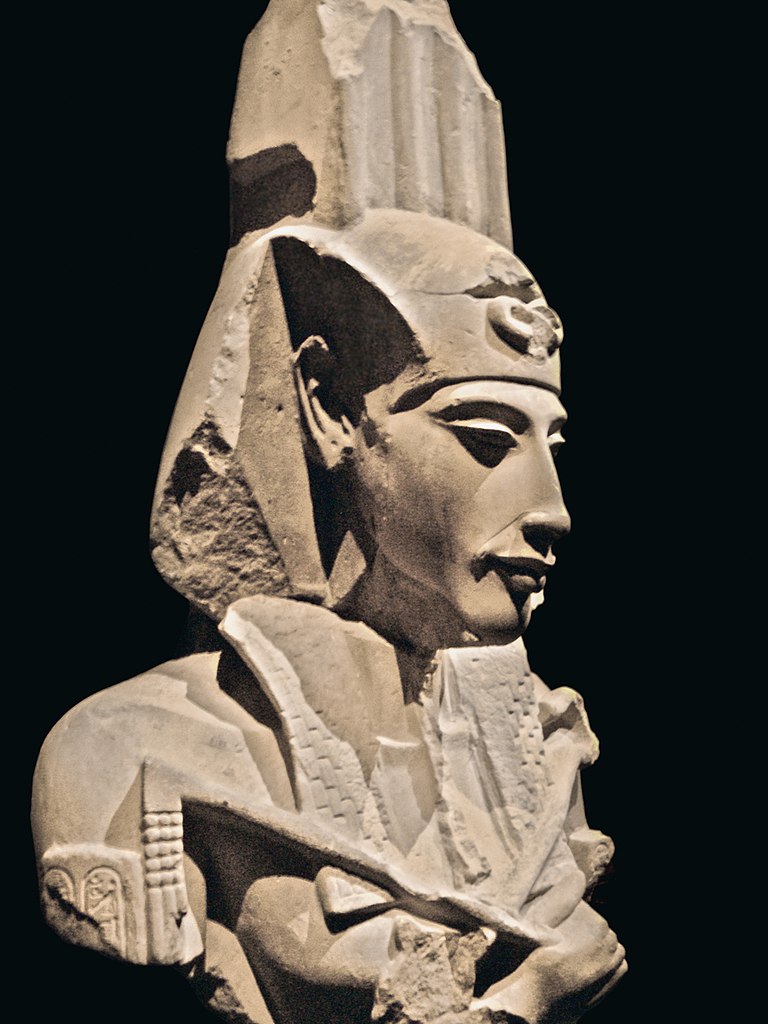
Statue of Akhenaten from a pillar at Aten temple in Karnak, Egyptian Museum, Cairo. Photo by José-Manuel Benito Álvarez via Wikimedia Commons (CC-BY-SA-2.5).
Although the concept of pharaonic divinity was not novel, Akhenaten attempted to go a step further in his attempt to establish himself as the sole living god intended to be worshipped generation after generation.
Early in his reign, Amenhotep IV changed his name to Akhenaten or “beneficial to the Aten”. He also eliminated the need for the priesthood by declaring himself as the only intermediary between Aten and the people. Even if the initial shift to Atenism was politically motivated, towards the later part of his reign he was not just claiming to be an intermediary to Aten, but as the living manifestation of Aten himself. He made repeated proclamations of his own divinity in his composition, The Great Hymn to the Aten, one of the rare texts dedicated to the Aten.
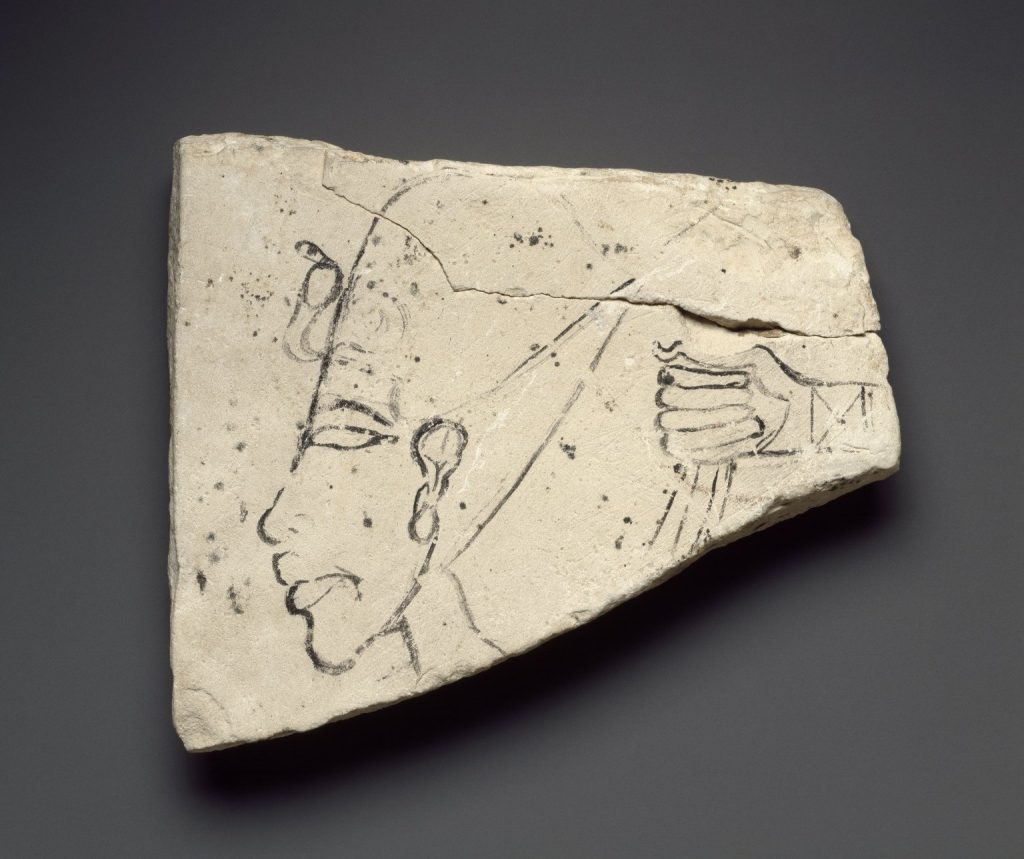
Figured Ostracon with Head of Akhenaten, ca. 1352–1336 BCE, Brooklyn Museum, Brooklyn, NY, US.
Akhenaten has been dubbed history’s first monotheist but the rise of Atenism is perhaps better described as a henotheistic order. This transformative regime did not reject the divinity of the traditional Egyptian pantheon but still sought to dismantle the long-established order centered around the cult of the supreme deity Amun-Ra. Akhenaten abolished the revered position of “God’s Wife of Amun” – the highest-ranking priestess in the cult of Amun, and disbanded the cult of Amun, redirecting their extensive wealth and land holdings to the worship of Aten.
By the ninth year of his reign, Akhenaten ordered the defacing of Amun’s temples throughout Egypt. Furthermore, in a number of instances inscriptions of the plural “gods” were removed. The illiterate mercenary army hired to enact Akhenaten’s will also chiseled away the characters for “Ame(u)n” from the inscriptions of Amenhotep III from his temple at Luxor.
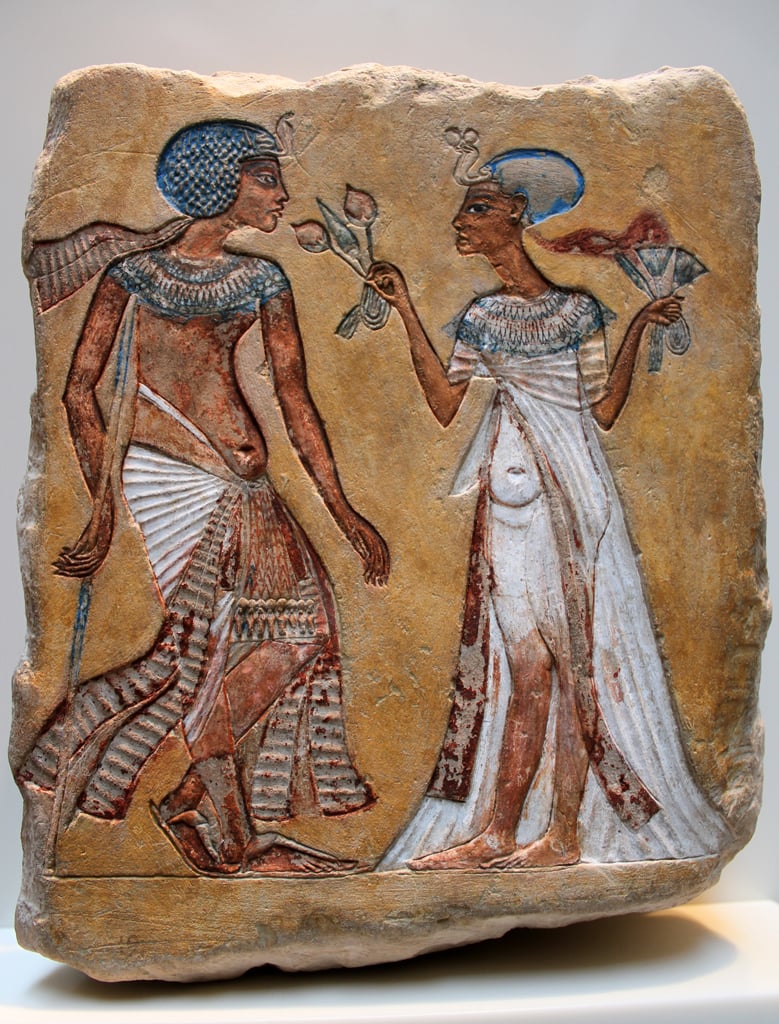
Painted limestone relief, possibly depicts Akhenaten and Nefertiti, ca. 1335 BCE, Neues Museum, Berlin, Germany.
The ancient Egyptians who lived during the Eighteenth Dynasty came from a long tradition of polytheistic worship that was deeply embedded in this religious and conservative society. This drastic shift in their social order was likely viewed with great contempt. This contempt and distrust were likely exacerbated when a great famine shook Egypt during Akhenaten’s reign, probably deepening the public resentment of this “heretic” king.
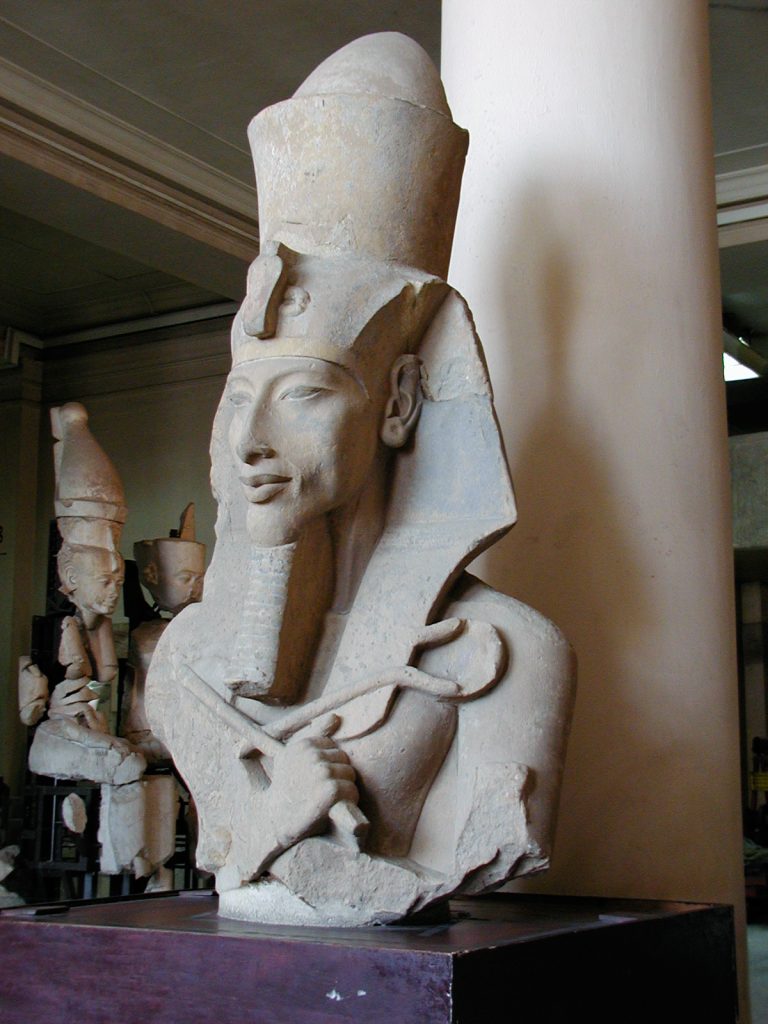
Statues of Akhenaten at the Cairo Egyptian Museum. Wikimedia Commons (CC-BY-SA-2.5).
In a possible attempt to be rid of the influences of the disgruntled priests of Amun at Luxor, Akhenaten established a new capital city called either Akhetaten or the horizon of the Aten, halfway between Luxor and Memphis. This city was intended to be dedicated to the worship of Aten and is in present-day Minya Governorate, Egypt.
The term “Amarna Period”, used by historians to describe the reign of Akhenaten, was named after the modern town of Amarna, on the east bank of the Nile in the location of Akhetaten. Currently, Amarna is an archaeological site.
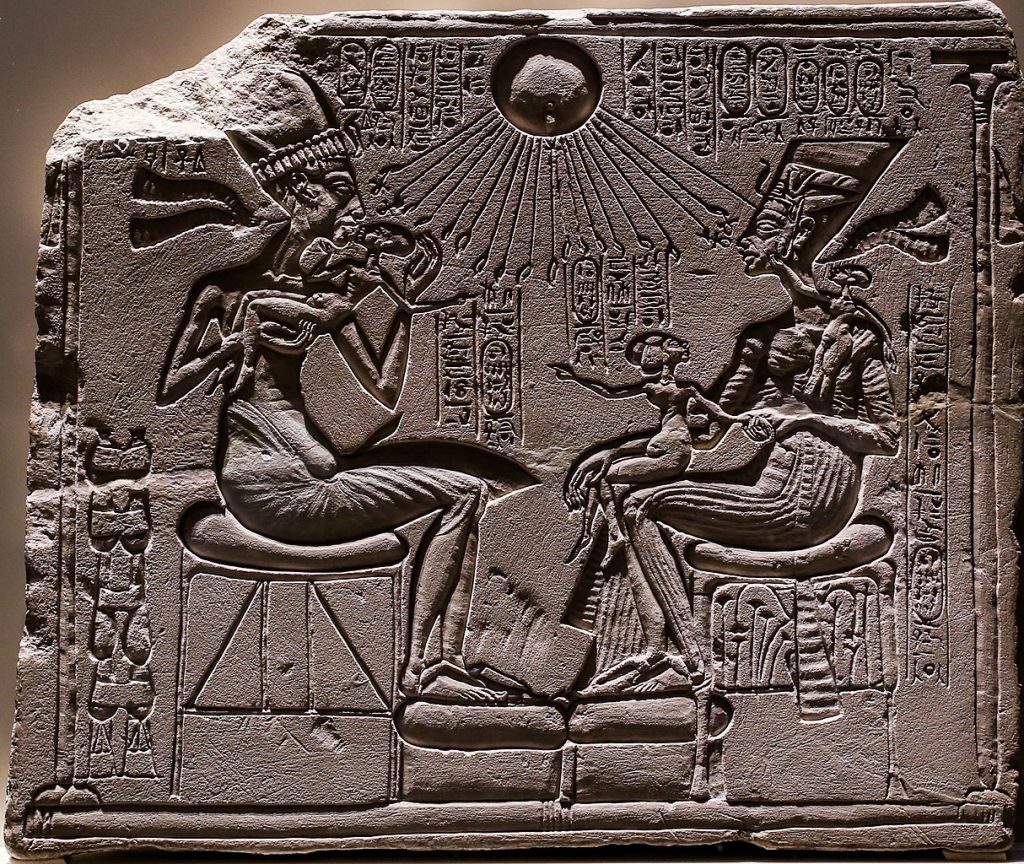
The House Altar: Akhenaten, Nefertiti, and their children, ca. 1340 BCE, Egyptian Museum of Berlin, Berlin, Germany. Google Arts & Culture.
The reign of Akhenaten also witnessed a significant departure from conventional norms and the establishment of what is now known as the Amarna style. It was an early attempt at naturalism where the formal rigid representations of the prior pharaohs and gods were abandoned in favor of warm and intimate depictions of Akhenaten and his family in apparent domestic bliss.
Depictions of the pharaoh and his family have exaggerated features comprising elongated heads, full lips, slender bodies, a protruding belly, and sloping shoulders. Furthermore, depictions featuring androgynous forms became common.
It has been theorized that the distinctive appearance of Akhenaten could be a result of a congenital disorder, either Marfan’s Syndrome, Froelich’s Syndrome, or elephantiasis. It is more than likely that a pituitary tumor would result in Akhenaton’s peculiar physical form.
It has been speculated that Akhenaten’s androgyny in visual art could have been a metaphor. Aten (as well as Akhenaten) was called “father and mother of all.” This could also explain the Pharaoh’s depictions with feminine attributes such as curved breasts and wide hips to symbolize life and fertility.
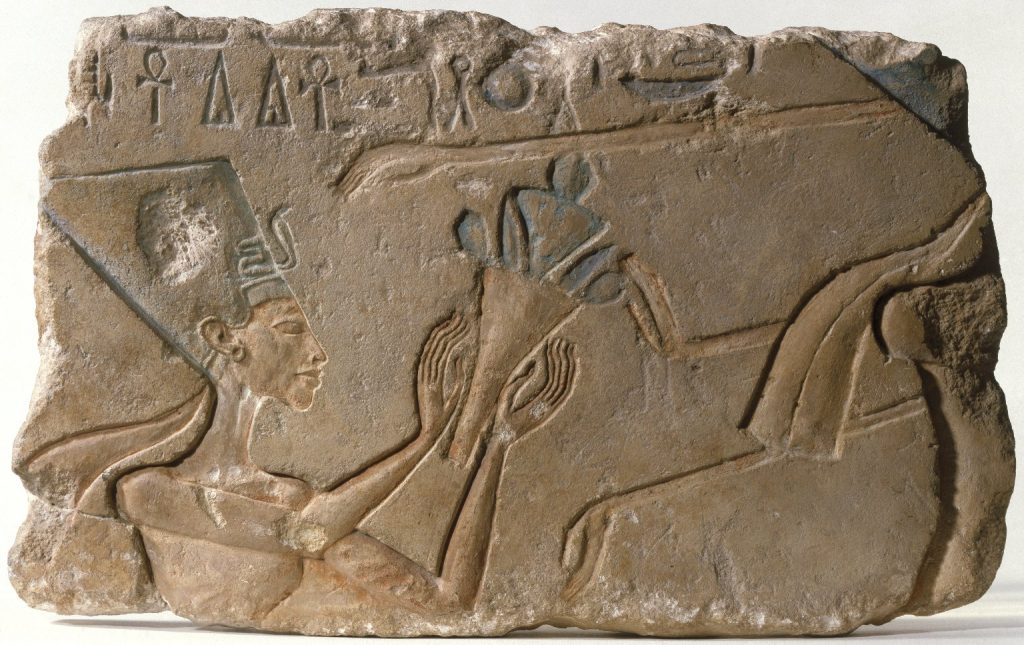
Nefertiti in the unique flat-topped crown on limestone panel, ca. 1352 – 1336 BCE, Brooklyn Museum, Brooklyn, NY, US.
Akhenaten’s other claim to fame was his marriage to the enigmatic queen, Nefertiti. She played a prominent role during his reign and is remembered as one of the most beautiful women in ancient Egyptian history. Queen Nefertiti bore him six daughters, including Ankhesenamun, the future wife of the famous boy-king, Tutankhamun.
Some historians believe that Nefertiti may have been Akhenaten’s co-regnant rather than his consort, however, there is no conclusive evidence to confirm her political status. She vanished from history somewhere around the 12th year of Akhenaten’s reign.
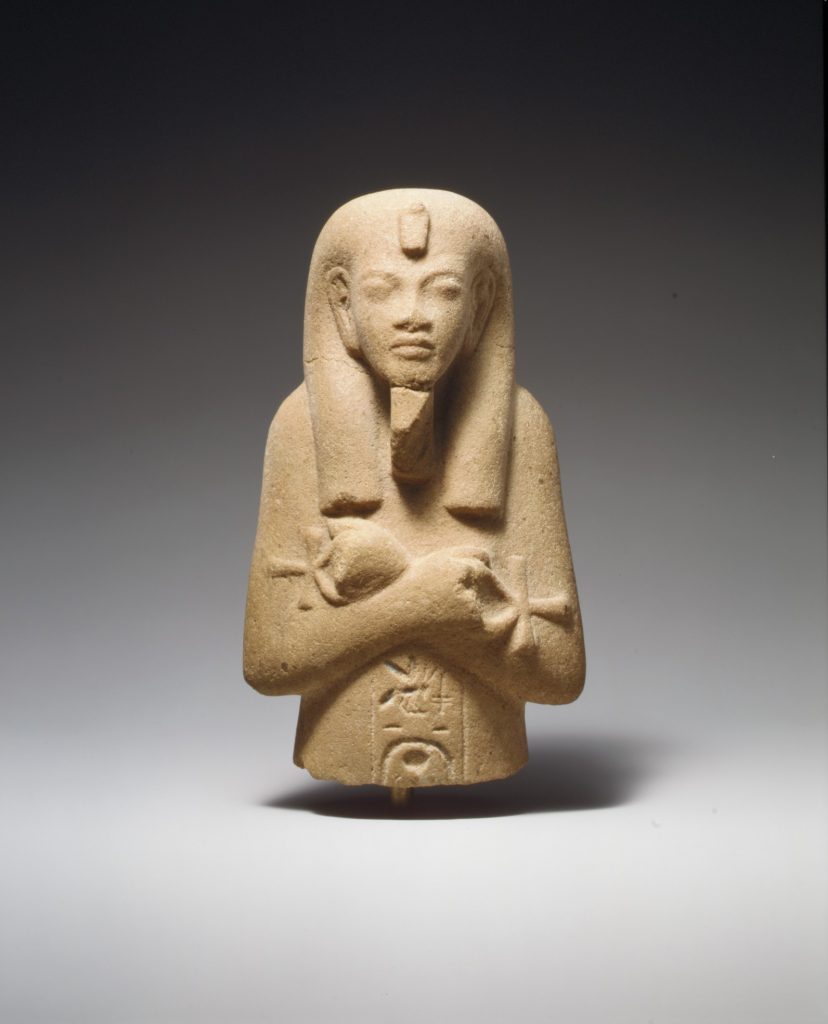
Funerary Figure of Akhenaten, ca. 1353–1336 BCE, The Metropolitan Museum of Art, New York, NY, US.
Despite Akhenaten’s profound impact on ancient Egyptian art and religion, the Amarna revolution did not survive his demise. The deviation from established religious norms and the brutality of his regime resulted in very unfavorable public opinion. Subsequently, the cult of Amun quickly resumed their influential position after Akhenaten‘s passing. Furthermore, the priests influenced his young son Tutankhamun to denounce his father’s religious reform and restore the traditional religious order. Akhenaten’s reign was thereby erased from historical records and his art was largely destroyed only to resurface through archeological initiatives.
DailyArt Magazine needs your support. Every contribution, however big or small, is very valuable for our future. Thanks to it, we will be able to sustain and grow the Magazine. Thank you for your help!